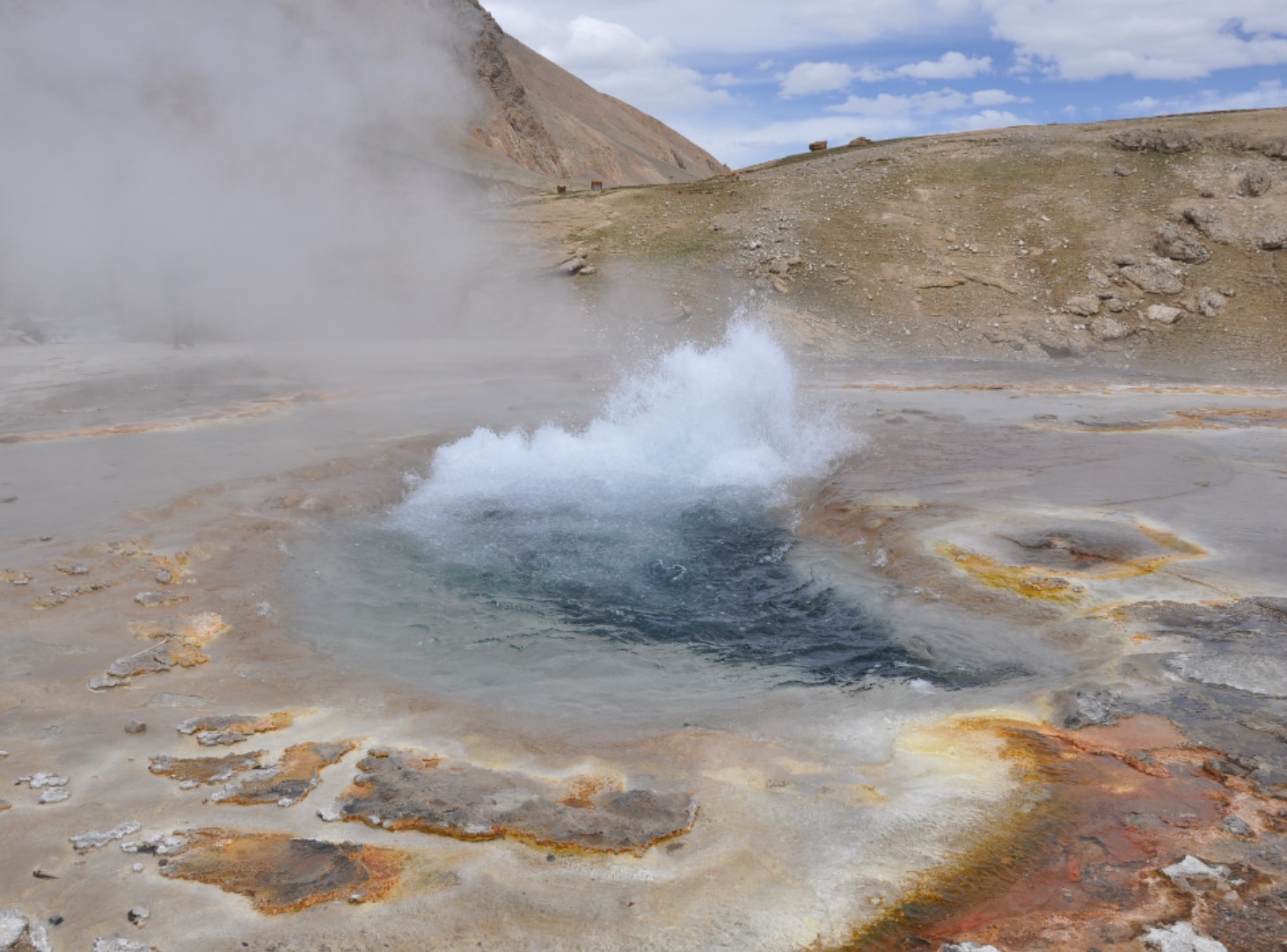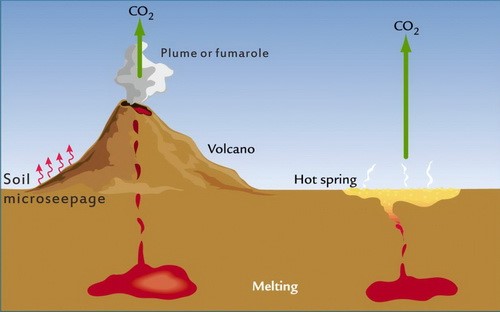Earth degassing is a critical carbon source, but its contribution to Cenozoic atmospheric CO2 variations is not well known. Here, Prof. GUOZhengfu at Institute of Geology and Geophysics (IGG) of Chinese Academy of Sciences found that the metamorphic and volcanic CO2 emission rates on Tibetan Plateau correlate well with the global atmospheric CO2 curve, which suggested the India-Asia collision was the primary driver of changes in atmospheric CO2 over the past 65 Ma. This work was published in Nature Communications.
Earth’s climate Cooling in Cenozoic are thought to be related to the decreasing atmospheric CO2 concentrations, however, factors leading to such decreases remain highly controversial. The tectonic and volcanic contributions towards atmospheric CO2 from deep terrestrial sources have been studied using the India-Asia collision, to take towards quantifying our understanding of Earth's Cenozoic atmosphere.
Based on systematic geochemical data and analysis of magmatic rocks in Tibet, scientists proposed a three-stage evolution model of Cenozoic magmatism in Tibet and atmospheric CO2 variations. A continental collision-derived CO2 flux model (CCFM) was developed to estimate the CO2 emission flux from magmatism and metamorphism across the whole Cenozoic. Calculated results yield a broad range of CO2 degassing fluxes from ~0.0001 to 10 Pg (1Pg = 109 Tons) in Cenozoic, and may also be divided into three stages.

Figure 1: Deep CO2 emissions from Dagejia hydrothermal field in Tibetan plateau. (Image by Prof. GUO's group)
The strong correlation between magmatic activity, source region composition, modelled CO2 outgassing rate and atmospheric CO2 concentration is fully consistent with a causal link between India-Asia collision and global CO2 variations, and the related paleo-climate changes in Cenozoic, which highlights the carbon contribution from subduction-induced carbonate metasomatism in continental collisional zones.
“This study has taken the quantification of metamorphic and volcanic sources of CO2 to a new level of precision and documentation. In the geological past, mountain building was apparently atmosphere building”, reviewed by the website of Department of Earth and Environmental Sciences, Ludwig Maximilian University of Munich.
The study was done in collaboration with scientists from University of Leeds and Ludwig Maximilian University of Munich, and was supported by the Strategic Priority Research Program (B) and Key Research Project of Frontier Sciences of Chinese Academy of Sciences, the National Natural Science Foundation of China, the Second Tibetan Plateau Scientific Expedition and Research Program and the National Key Research and Development Program of China.

Figure 2: Types of CO2 emissions from volcanic field (modified from Ruddiman, 2008).
Contact:
GUO Zhengfu
Key Laboratory of Cenozoic Geology and Environment, Institute of Geology and Geophysics
Phone: 86-01-82998393
E-mail: zfguo@mail.iggcas.ac.cn
Reference:
India-Asia collision as a driver of atmospheric CO2in the Cenozoic